Field notes from walking as performance practice
When I got to Lahore, I wasn’t sure if I would be able to walk the streets or not. I had heard it was not commonplace to be on foot, not for women, not for the well-to-do. Walking has been both the process and outcome of my work. In Lahore in 2016, it was my topic and my method for an artistic research project on what it means to be a body in public space in Pakistan, particularly for women.
This walking practice speaks to a right to be physically present in the urban scape and to the importance of that presence for a city and its people to grow together. In my performances in Lahore I invited participants to take time walking to acknowledge our relationship with our urban public spaces, exposing our physical presence to it, and vice versa. In the process we contemplate our reciprocal responsibility and interdependence, become vulnerable and imagine how we can give to our environment with each step that we take. It is an act of reduction, creating space to focus in on the moment at hand with generosity.
The streets of Lahore are busy, alive with daily life, and occupied in a myriad of innovative ways. They are also often difficult or hostile for some, especially women and those without an obvious purpose for being there. There are a multitude of factors that can make it uncomfortable to walk the streets of Lahore: social, environmental, and architectural to name a few. Many women I spoke to said that although they were keen walkers, over time they got tired of the harassment they experienced, and stopped.
The semiotics of the security measures on the streets often led me to conjure images of my flesh being torn apart by barbed wire, sliced by broken glass or impaled on a sharp object; and these images left a violent shadow on harmless actions.
I heard a memory, alive in people still, of times when people did walk the streets comfortably, safely, equally, freely. It was a time not too long ago, and in its place now stands a complexity. This complexity breeds a certain futility, one that surpasses the philosophical futility I have played with in the past in order to welcome failure. This futility threatens hope. In the face of such complexity, I turn to actions of simplicity and reduction so as not to stagnate possibility. Not as a means of denying the innate complexity in any intercultural conversation, but as a tool for unpacking it. There are so many reasons not to do anything, and walking is the most active way to do nothing.
My work activates awareness within the everyday by using mindful techniques such as silence, slow pace, absence, and repetition as performative guidelines for actions in everyday life. These actions are encounters that form relationships, allowing social sculptures to take root. In a time when urbanisation is exponential, it is apt to foster this kind of encounter between a city and its citizens.
To activate an organic and harmonious transformation of the city, first we need to be able to be, harmoniously, in the city.
***
Subjective Geographies
The Research Phase
My research method began by asking local people of both genders: What does walking mean to you? Will you walk with me? Suggest a route and tell me why. In this way, I discovered the Lahore precincts of Gulberg, Model Town, Anarkali, The Cantonement, Icchra, The Walled City, The Railway, Gawalmandi, and surrounding areas on foot. Many of the participants had not walked these areas themselves before. I began to form my own map of the city through the subjective realities and experiences of the individuals with whom I walked.
While we walked, I wrote down my observations and some quotes from my companions, allowing my research and the specifics of the documentation to be shaped by the conditions of walking these streets. After each walk, my companions also wrote down their thoughts, some of which are included here.
As regularly as it was possible to walk, it was not, and the reasons why are an indication of some of the restrictions Lahoris face when setting out for a stroll. But when it does happen, and when accompanied by locals, walking in Lahore is insightful, vulnerable, sometimes exhausting, and always eventful.
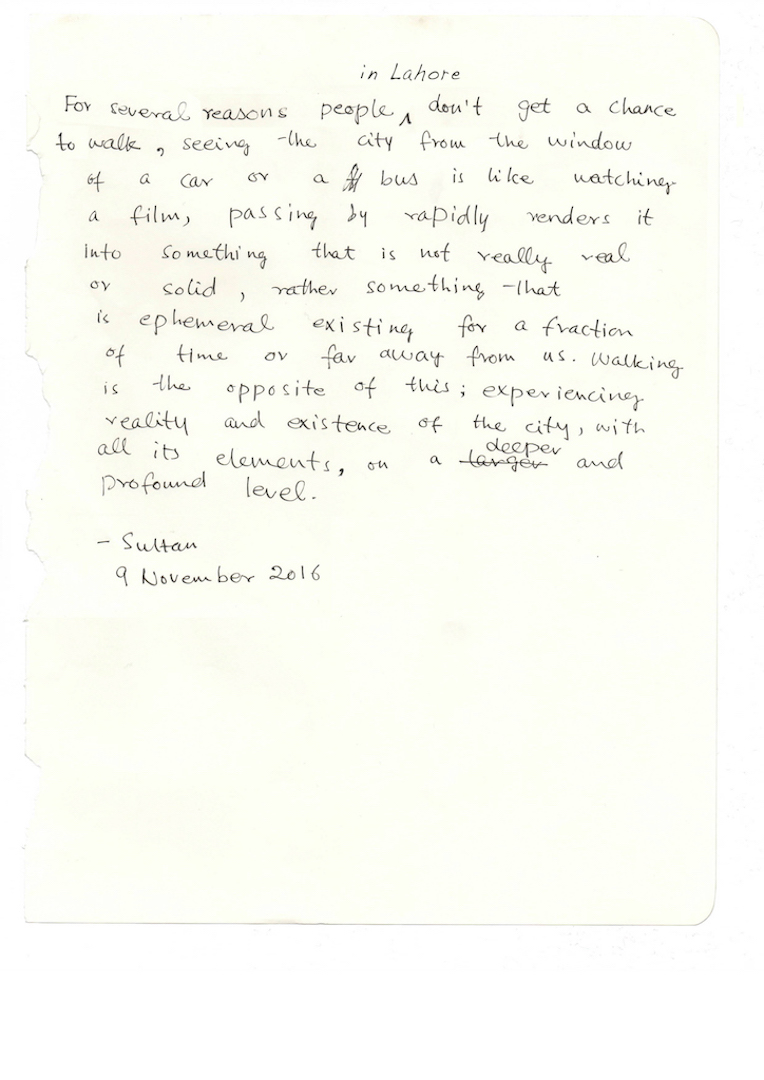
Subjective Geographies. Social Performance, Mall Rd Lahore 2016. Participant response from Sultan Ali
*
Jinnah Park to Anarkali
Start 31°33’18.9”N 74°19’55.2”E — End 31°34’04.2”N 74°18’36.4”E
November 9, 2016, 5 participants, 1.5 hours.
Along this route is one of Lahore’s main arteries and a place of regular political protest, the Mall road. The day we walked it the doctors were on strike and had occupied an intersection. The traffic stopped, and we were late to meet. Mall road is lined with many historical buildings, although you cannot see them as they are encased with high walls, protected by gates, wire, men, and guns. There is the feeling that these barricades never end, that everything in Lahore is a self contained island, protecting itself from interacting with the city. The spaces in between are left as no-man’s land, at risk of becoming toxic through neglect.
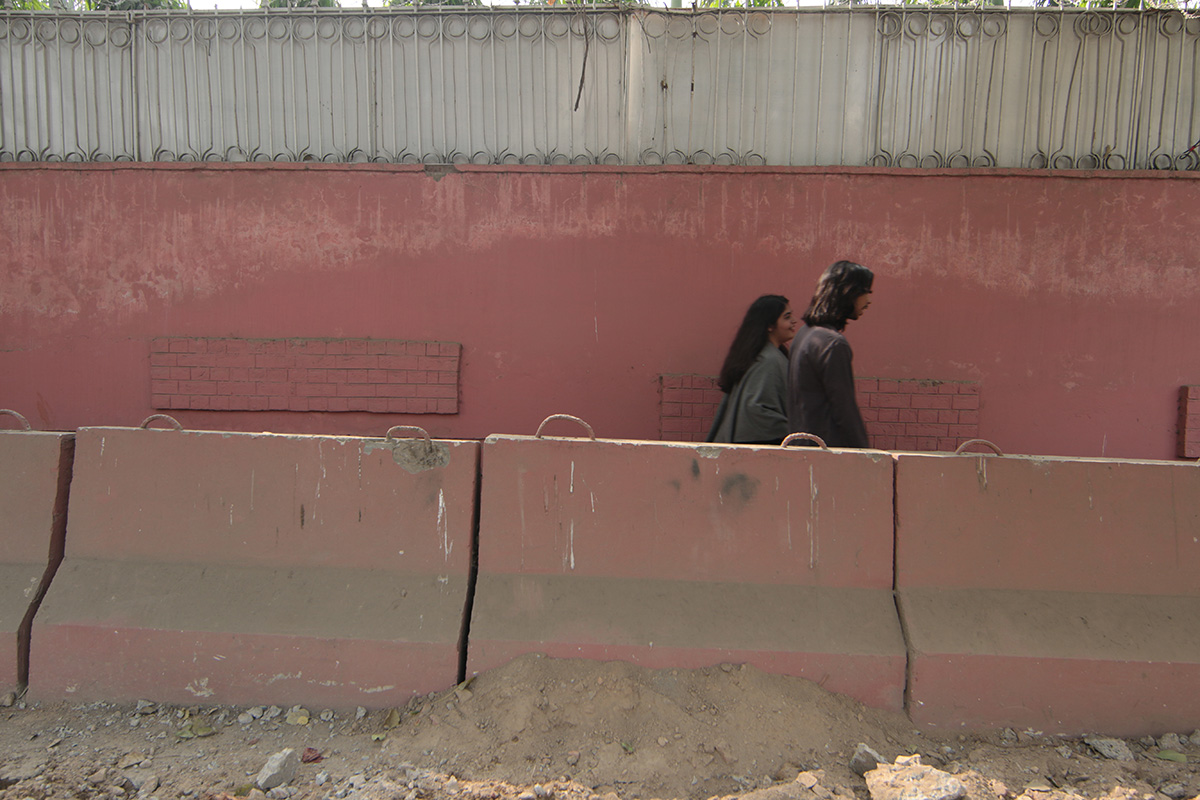
Subjective Geographies. Social Performance, Mall Rd Lahore 2016. Photo by Sultan Ali
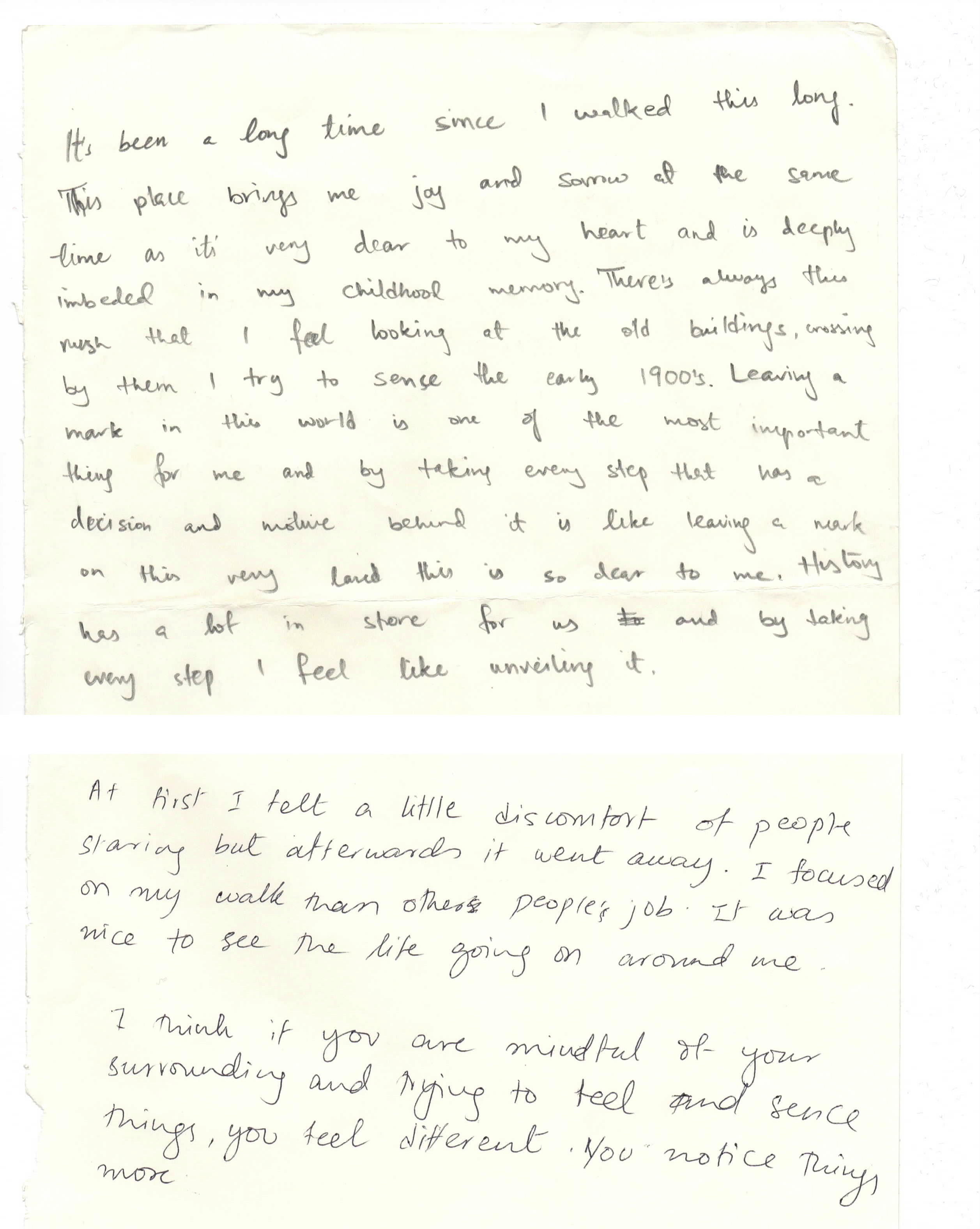
Subjective Geographies, 2 participant responses from Eemaan Raja and Anonymous 2016
*
Railway to Delhi Gate
Start 31°34’36.4”N 74°20’10.3”E -- End 31°34’59.6”N 74°19’10.7”E
November 12, 2016, 3 participants, 1.5 hours.
At Lahore Railway Station, a colonial building in the centre of town that stands as a monument to the former British Raj, Munadi organises us platform tickets so that we can walk on the platforms, but we do not board a train. We follow the tracks as far as we can. We walk through the metal markets where not a single other woman is in sight. Munadi walks here often. He steps onto chaotic roads with a calm and deliberate constancy. “If you keep a steady pace, the cars can predict you, and you won’t get hit,” he says. I try it later and it works. Here, a pedestrian needs a strategy and bravado to get through unshaken.
We reach Delhi Gate and walk into the ancient walled city from there. In the old city everybody is walking, so it is one place where it is comfortable to be on foot in the street. A welcome relief. There is a refreshing lack of cars, and the small winding streets welcome pedestrians with their lively street life. Historical sites are scattered throughout, some lovingly restored and protected, some in the flux of daily living. Dying daily.
For Munadi, “It’s a time capsule. Like a painting in motion.”
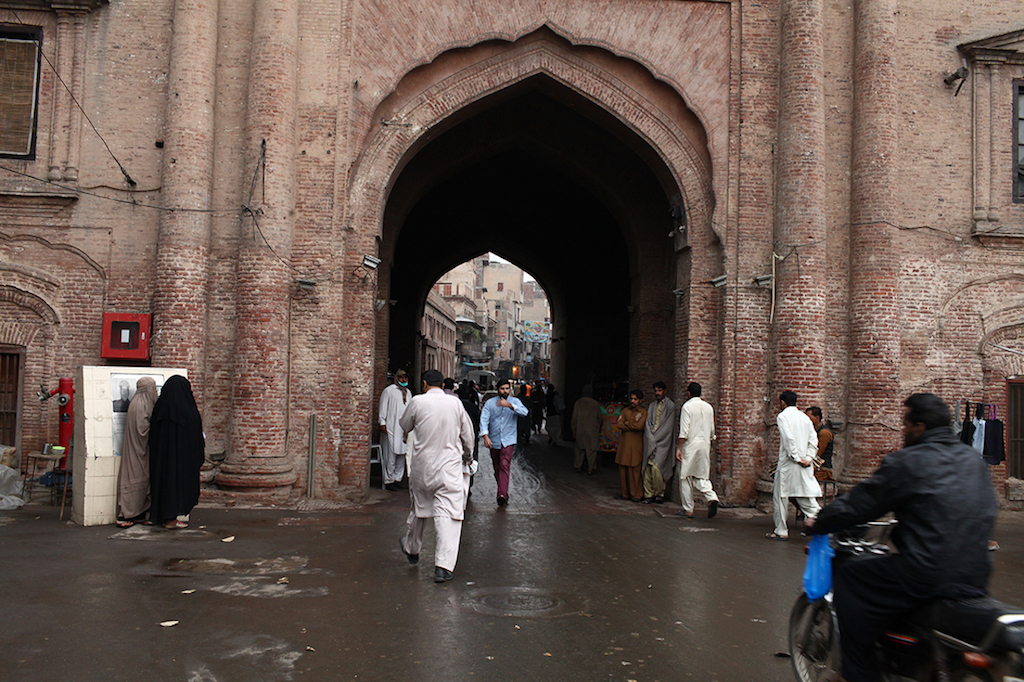
Subjective Geographies, Delhi Gate Lahore 2016. Photo by Sultan Ali
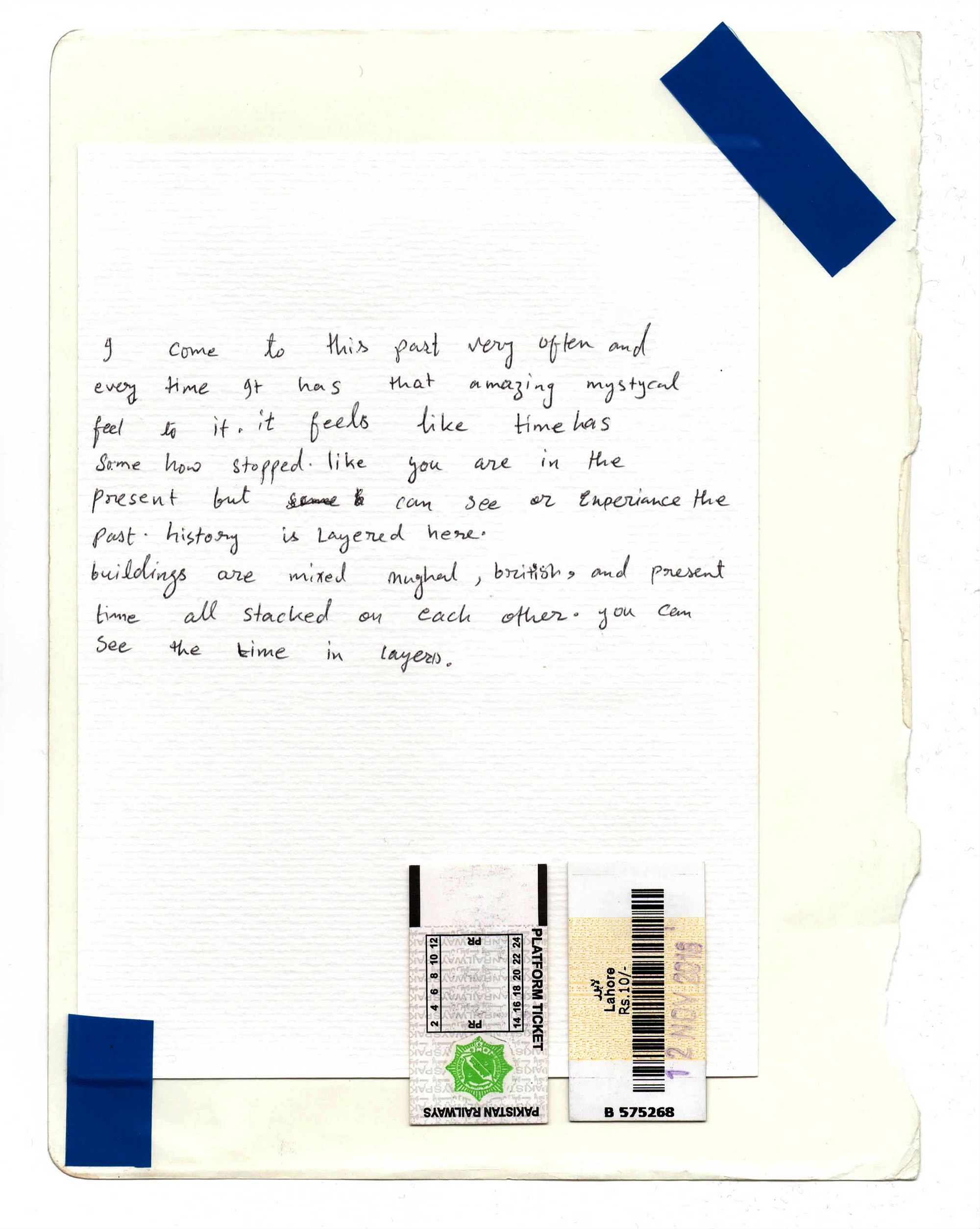
Subjective Geographies, Walled City Lahore 2016. Participant response from Munadi Ahmad
*
It’s been a week since the smog that hangs thickly over the city was deemed the worst in forty years. Even before it came I would return after an hour of walking with itchy eyes and a heavy chest.
Now, it is generally recommended that we don’t go outside and that we keep all windows shut. Even so, the rooms inside have a dense layer of smog thick to the ceiling.
My lungs are beginning to recover and the fever that I got from the pollution has passed.
Perhaps soon I can go walking again,
if anyone will accompany me.
Now, more than ever, is not the time to walk the streets of Lahore.
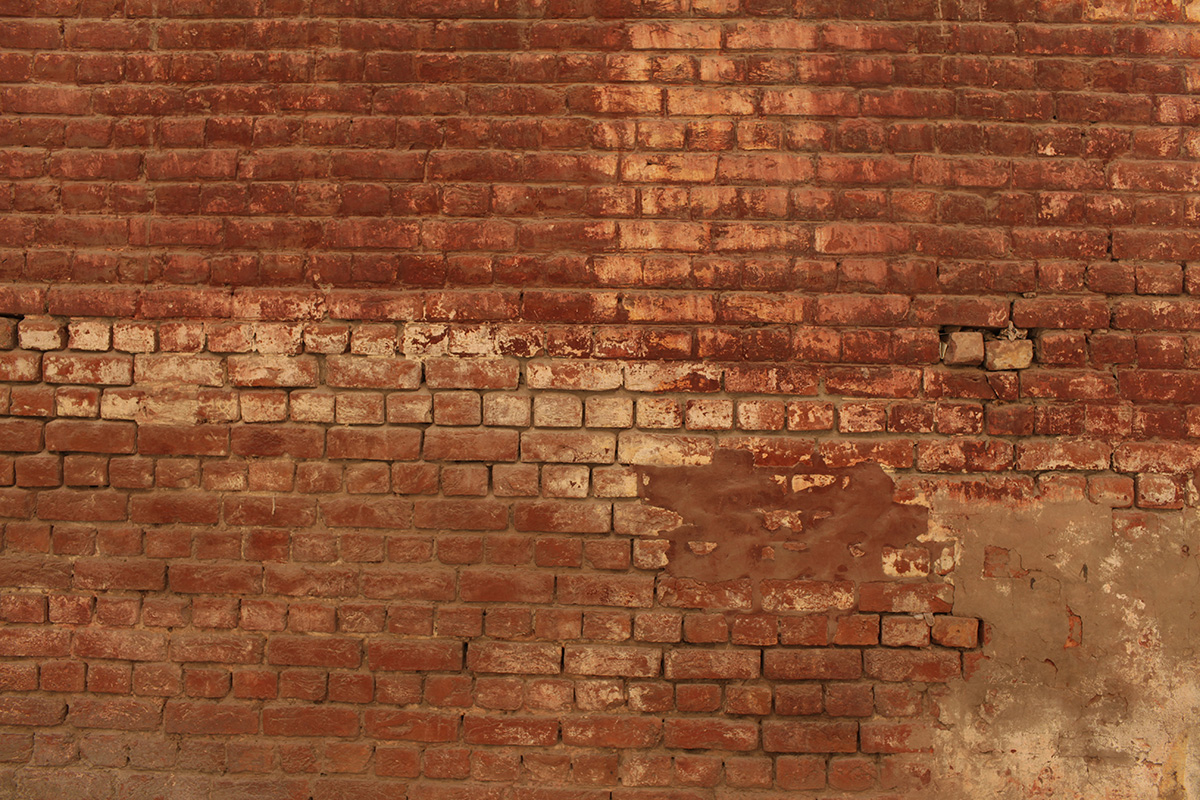
Subjective Geographies Lahore 2016. Photo by Sultan Ali
*
Red Light
I had planned to walk in the city with a young woman named Mariam Waheed who wrote to me about the gendered nature of being able to be in public in Pakistan. She wanted to walk in Heera Mandi, the (old) red light district of Lahore, a place rich in history and taboos, and the perfect place to discuss her theme. However our plans were halted. That day, the President of Turkey was visiting the city, and I was advised by my hosts not to go outside for political reasons, that it was not safe. Despite regular alarms of the like, my hosts were rarely so explicit in their injunctions, and I heeded their advice.
Outside, every surface of the inner city was painted in red and green lights to welcome the guest.
And regardless of our inactivity, the sentiment remains in this invitation to walk, written to me by Mariam:
“...walking to me is a job. I was born and raised in Pakistan and I have seen how the idea of walking or being by myself in public has evolved. When I was young it was kind of okay, I went out and played but came back before it was dark outside. As I grew up the idea of me being outside on my own became less and less common and now it’s alien to me because I don’t walk unless I absolutely have to walk and there’s no other option. But you know for whom it’s still the same? My brother. I don’t blame my parents for it because they are just trying to protect me like all the other parents who don’t let their daughters go out alone. I blame our society where gender roles are specifically assigned and anybody who tries to break them is immediately stopped.”
Mariam completed this walk a year later with a female colleague of hers from Nepal. She noted:
“…we talked about walking in the streets being a girl, sharing experiences of living in Pakistan and walking the very streets we were walking in. We also discussed how important it was for us to not be scared or refrain ourselves from experiencing these interesting streets and their culture. We were alone and a couple of times people tried to harass us on the streets, this one time a guy who was almost thrice as old as me walked past me and grabbed my butt. Although I felt really bad about it, I was still glad I decided to come to this place and walk here. We looked around and saw ghosts of the past in buildings, in people, in pathways.”
*
Model Town
Start 31°29’13.0”N 74°18’53.6”E
End 31°29’13.0”N 74°18’53.6”E
November 10, 2016, 2 participants, 1.5 hours.
Rida, a woman with whom I walked on the outskirts of Model Town (a suburb built by the British to model other suburbs on) says:
“We need to step out. In order to achieve it, we women just have to step out for leisure. Make it normal.
We are just going for a walk.
... it’s all about how you walk. When they look, I look back. Don’t let them feel dominant. Make them think we are equal.”
A car edges so close that it forces us to step aside.
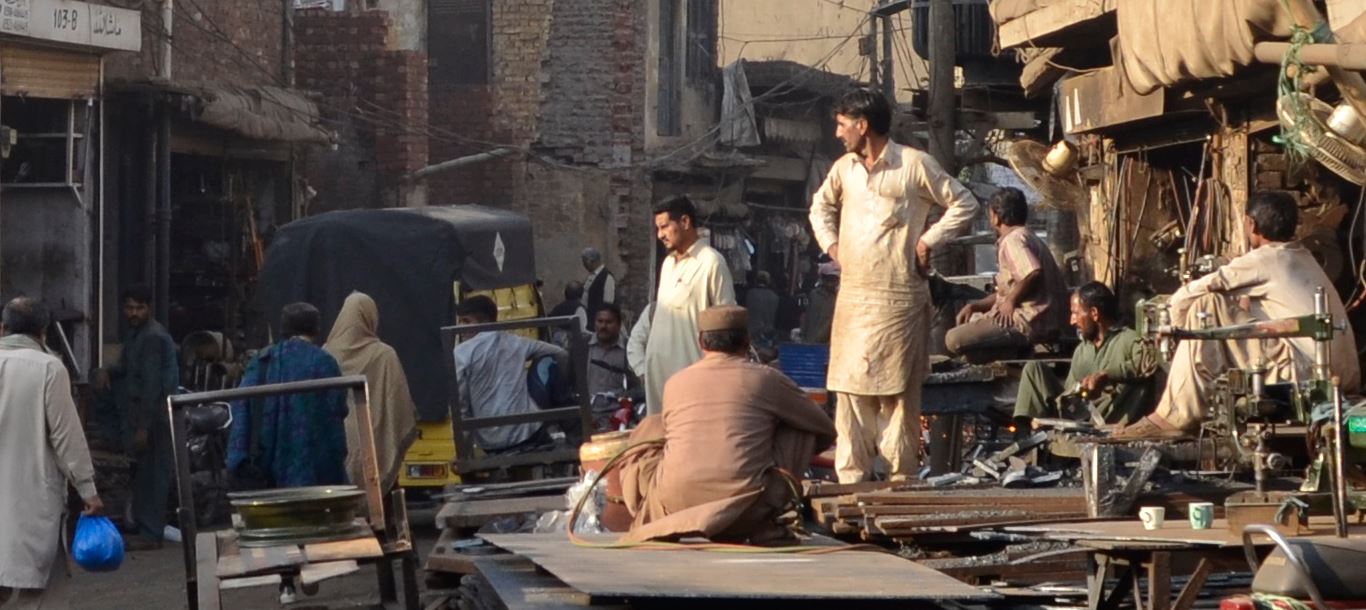
Rida Fatima. Women on the streets of Lahore 1
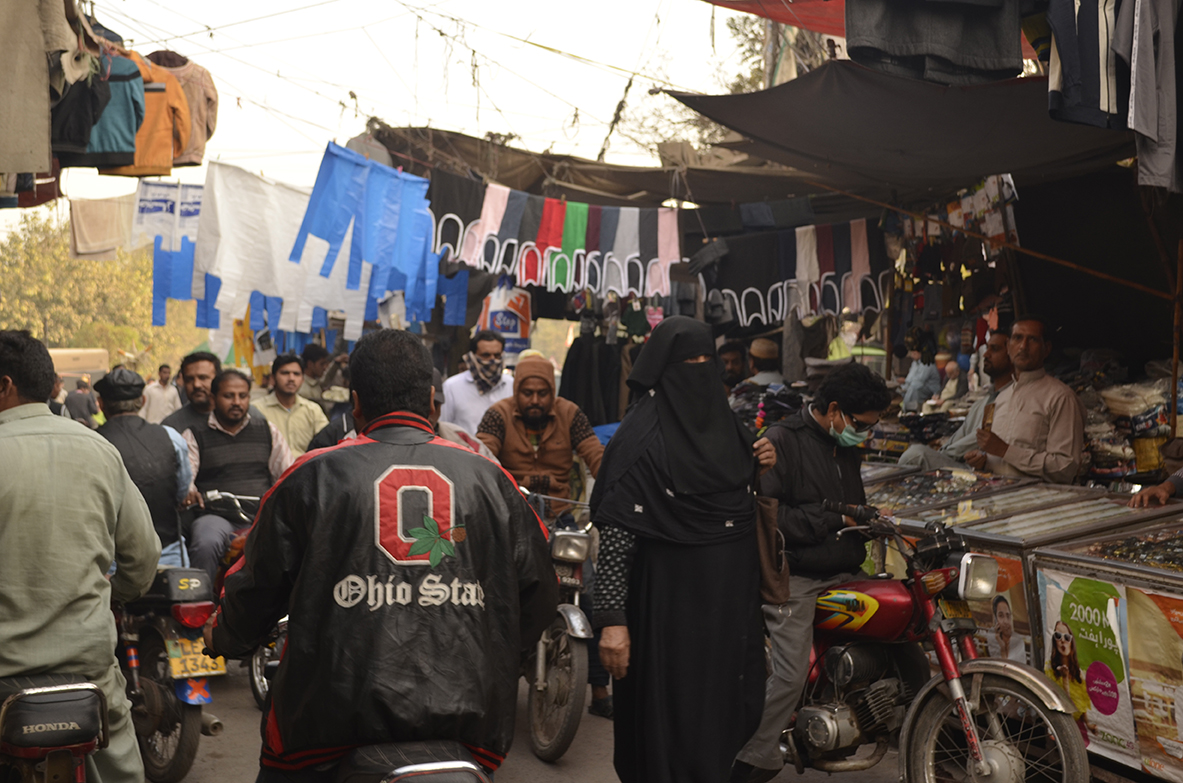
Rida Fatima. Women on the streets of Lahore 2
*
Anarkali
Start 31°34’10.0”N 74°18’43.9”E
End 31°33’50.0”N 74°18’34.4”E
December 2, 2016, 18 participants, 1 hour.
As efforts are being carried out passionately across Pakistan to make the first validated dossier of national history since partition, other histories are being turned to rubble and buried.
The Orange Line train construction lies like an open wound through the city. Some of the oldest parts of Lahore have been torn up for it, heritage buildings and sacred sites demolished, and communities ripped apart. “Can they not run this train line underground?” an activist commented, defeated after attempting to maintain the urban fabric around it.
Of one of the affected areas, a lady wrote to me:
“I would like to walk in Krishanager. It’s a place that was there before Pakistan was formed, my whole family used to live there. They still have the mohalla (community) concept there. There are small houses and small roads and I want to see what life is like for those people.”
Only days later she followed with:
“I’m sorry to announce that this place is under construction. I went there a few days ago and it’s jam packed and dusty because of the orange line construction. It’s not a suitable time to visit.”
It’s hard not to visit the orange line construction sites. Walking through Anarkali with its rambling Hindu and art deco architecture, you stumble onto it. The barren landscape of cut dirt sits stark and sorrowful in the middle of the otherwise bustling city. And there, there is a stillness, one that could be mistaken for peace.
Some people remain living in the semi-demolished housing around it, determined that they will not be pushed from their homes, but the construction makes it hard. It reminds me of the way they cleared many domestic buildings in China — just a painted symbol on the building in red meant that you had to leave, this place was zoned for development. But relocation for some is not an option, so whole families remain in ruins of buildings, with their amenities mostly cut off, kids playing in the rubble outside.
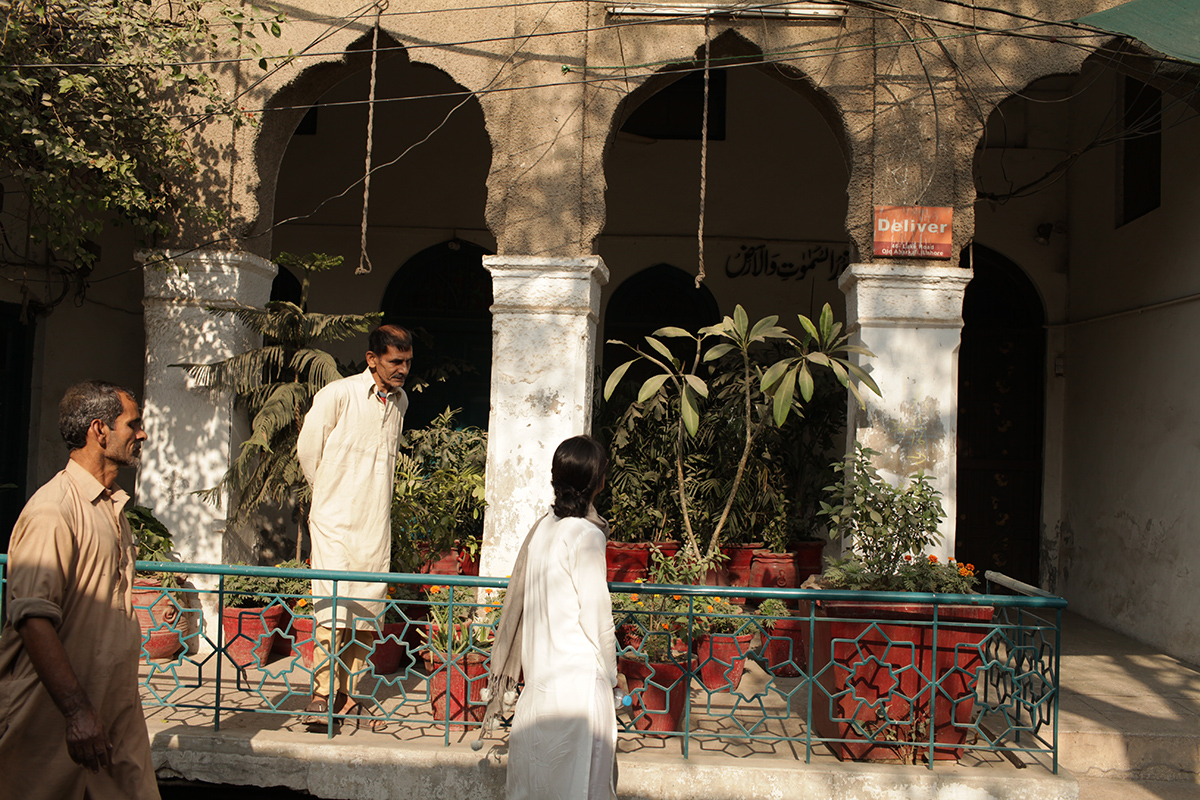
Walking in Anarkali 1. Photo by Sultan Ali
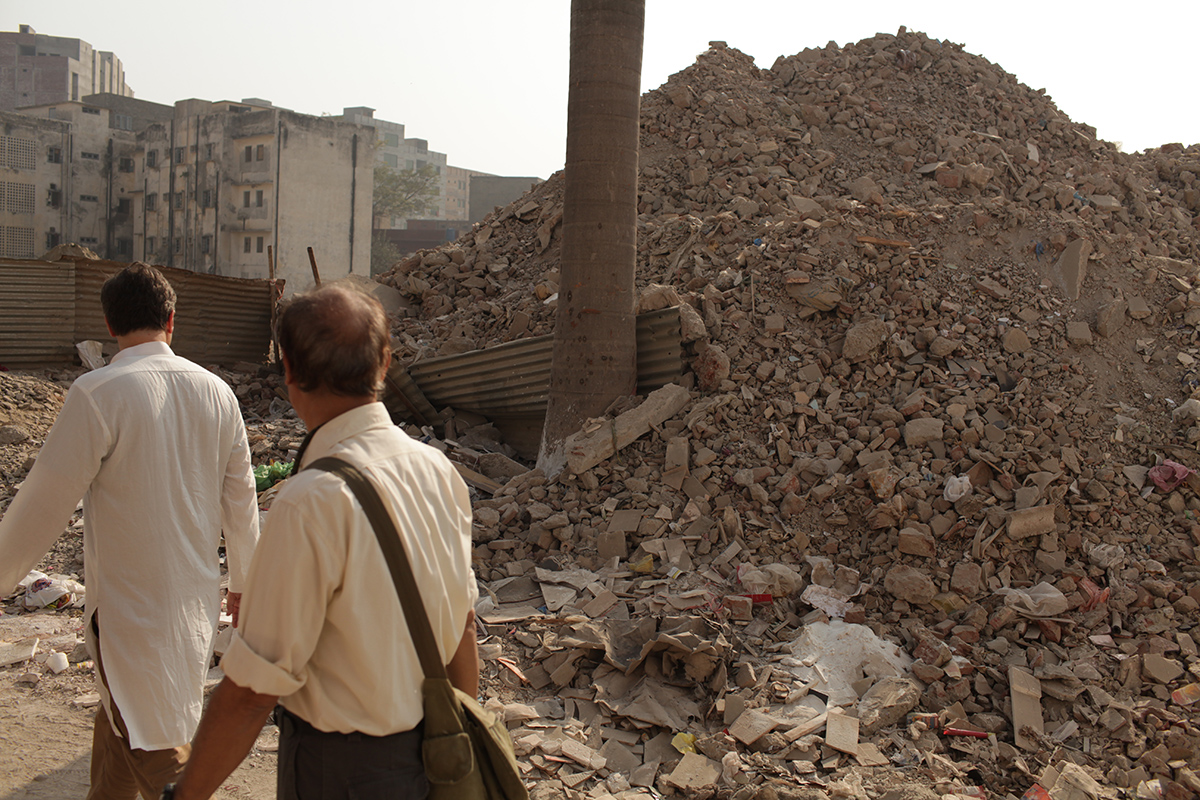
Walking in Anarkali 2. Photo by Sultan Ali
***
Walking Presence
Start 31°30’21.6”N 74°21’18.9”E -- End 31°30’46.2”N 74°21’15.9”E
November 20, 2016, 20 participants. 2 hours.
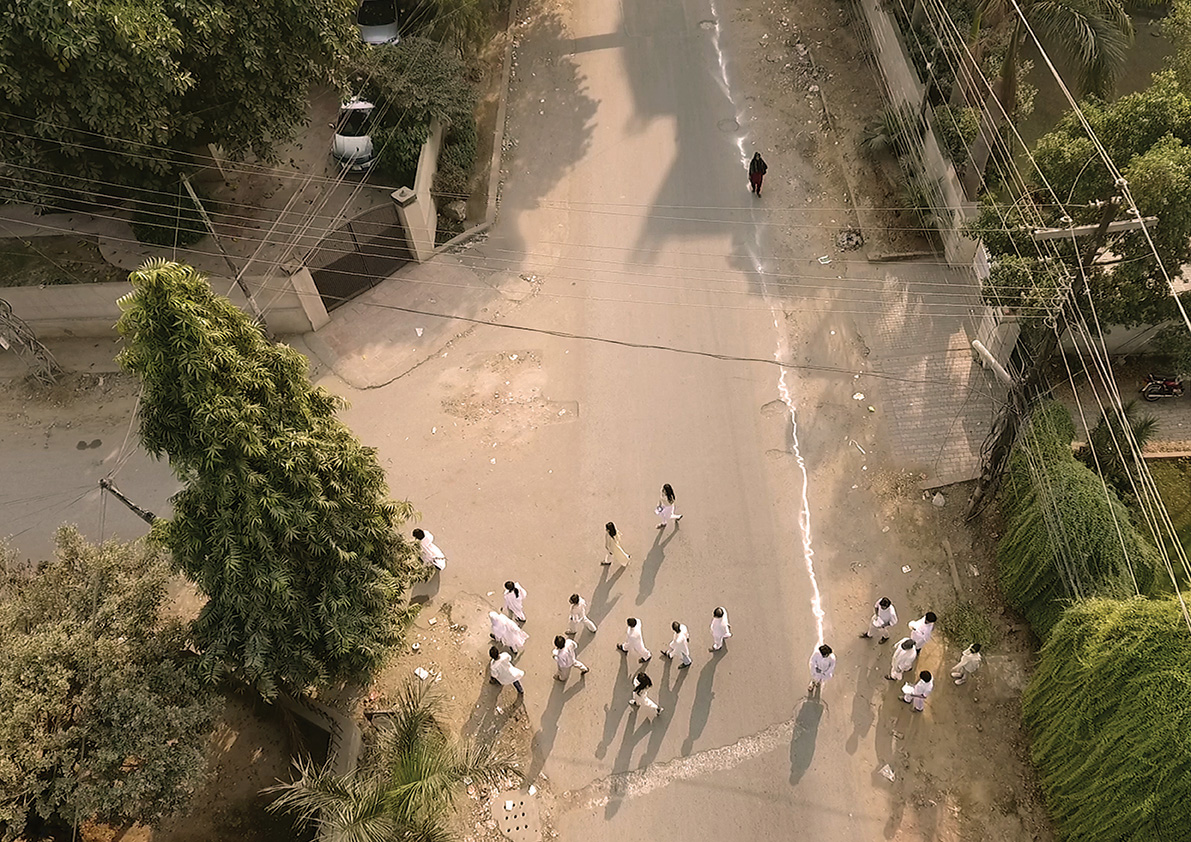
Honi Ryan. Walking Presence 2. Photo by Kashif Saleem
Mid morning on a Sunday in November, when the weather in Lahore is mild, 20 of us met in a small green enclosure in the central area of Gulberg to take a walk. The intention: to walk together, yet individually, in silence; to activate deep presence and to listen to the city with all of our senses; to walk for the sake of walking in a place where that is rarely done. This walk was led by local women and attended equally by both genders.
We walked slowly.
We did not speak.
We did not consume anything, nor use technology.
We wore white or beige clothing, binding us together — and like individual cells of the blood pulsing through the veins of the city, giving it life, we walked the streets. We walked from a park, through a commercial shopping and eating area, past a couple of schools, to another park, through a domestic colony, down a busy street, and ended in the centre of a local market place.
In Pakistan, a procession in white symbolises a funeral, and this sense of mourning accompanied us on our walk. Women do not attend a funeral procession, and so to the onlooker we were an anomaly. Silently, slowly, and in step, we lost the boundaries of ourselves to each other, and to the space. Many spoke of a sadness that permeated us as we surrendered to these streets on that quiet Sunday morning, and of a liberation in the act of doing so.
Only days before, I had made an application with Lahore City Council to build an installation of a temporary footpath along this route. I did not yet have an answer (our action today, preparing the path with our presence, is a non-imposing gesture that does not need official permission), but in the morning when we showed up the area had been cleaned, cleared of much of the rubbish and debris that had lined this way. I wondered, is it because we said that we were looking at this area that it has been cleaned? Was the idea of our possible presence enough to incite the government to step in and care for the space and improve it for the people? If so, then the piece was effective even in its conceptual form, and I ruminated on where else that could go after we spent time here in person.
One of the participants had suggested that we leave a trail of powder behind us, marking our way. Upon researching this gesture I discovered that in Lahore, when an urban area is being surveyed by the government, white powder is dropped in lines in the area. I wanted to communicate to the local community that we would be working along here this week; and so we left behind us a line of pale marble dust.
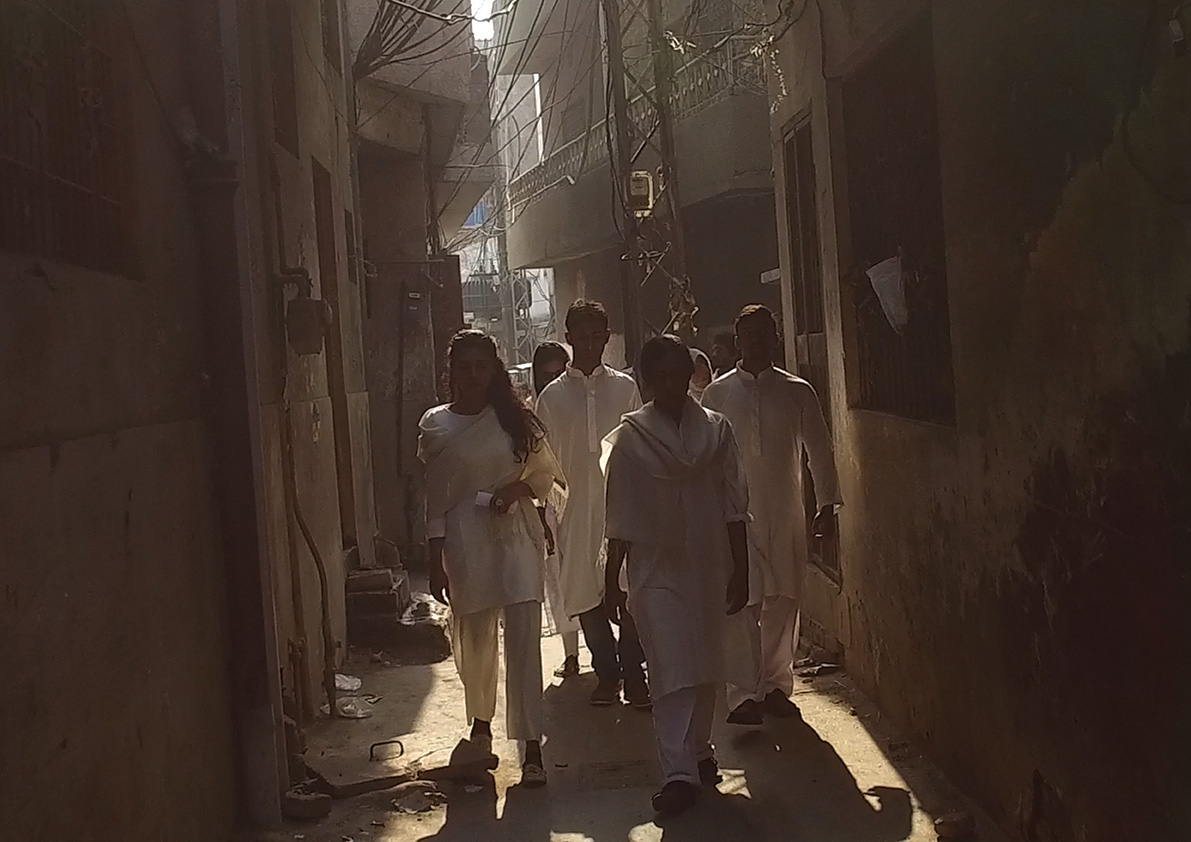
Honi Ryan. Walking Presence 1. Photo by Kashif Saleem
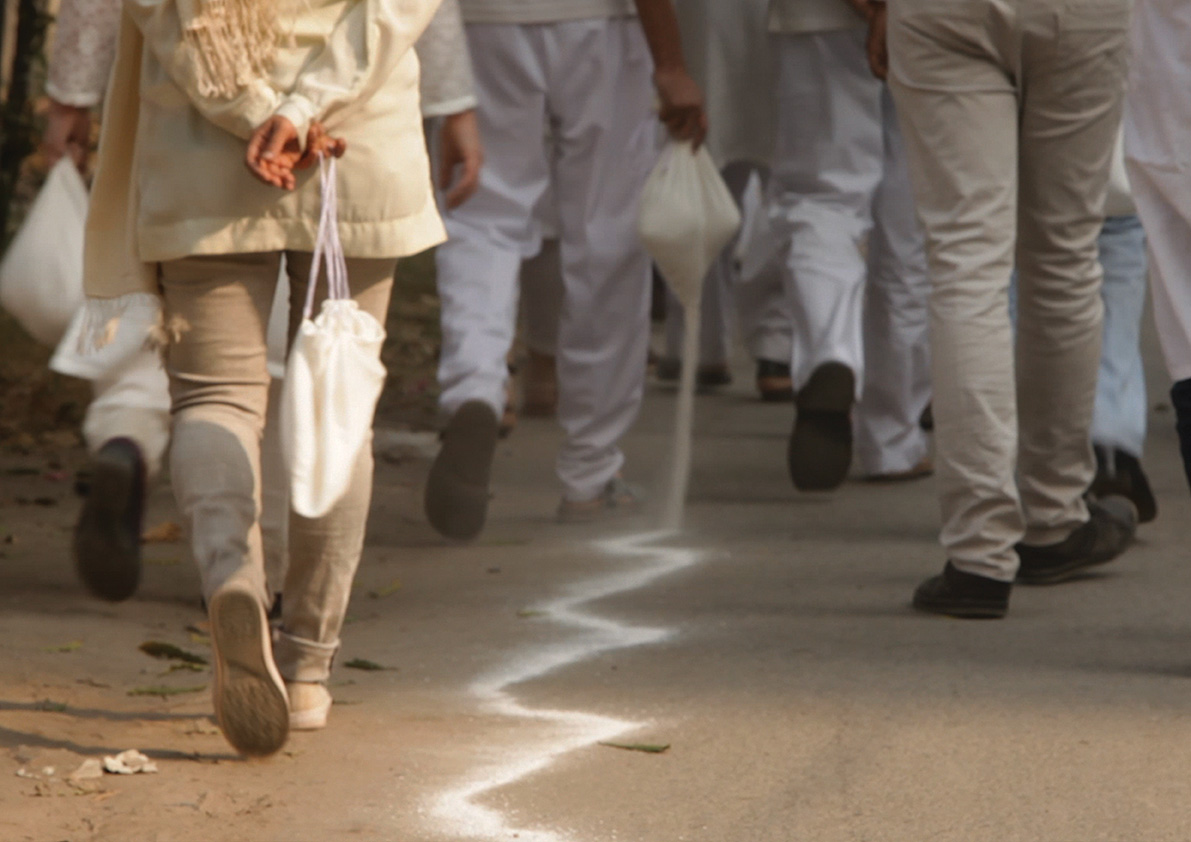
Honi Ryan. Walking Presence 3. Photo by Kashif Saleem

Honi Ryan. Walking Presence 4. Photo by Kashif Saleem
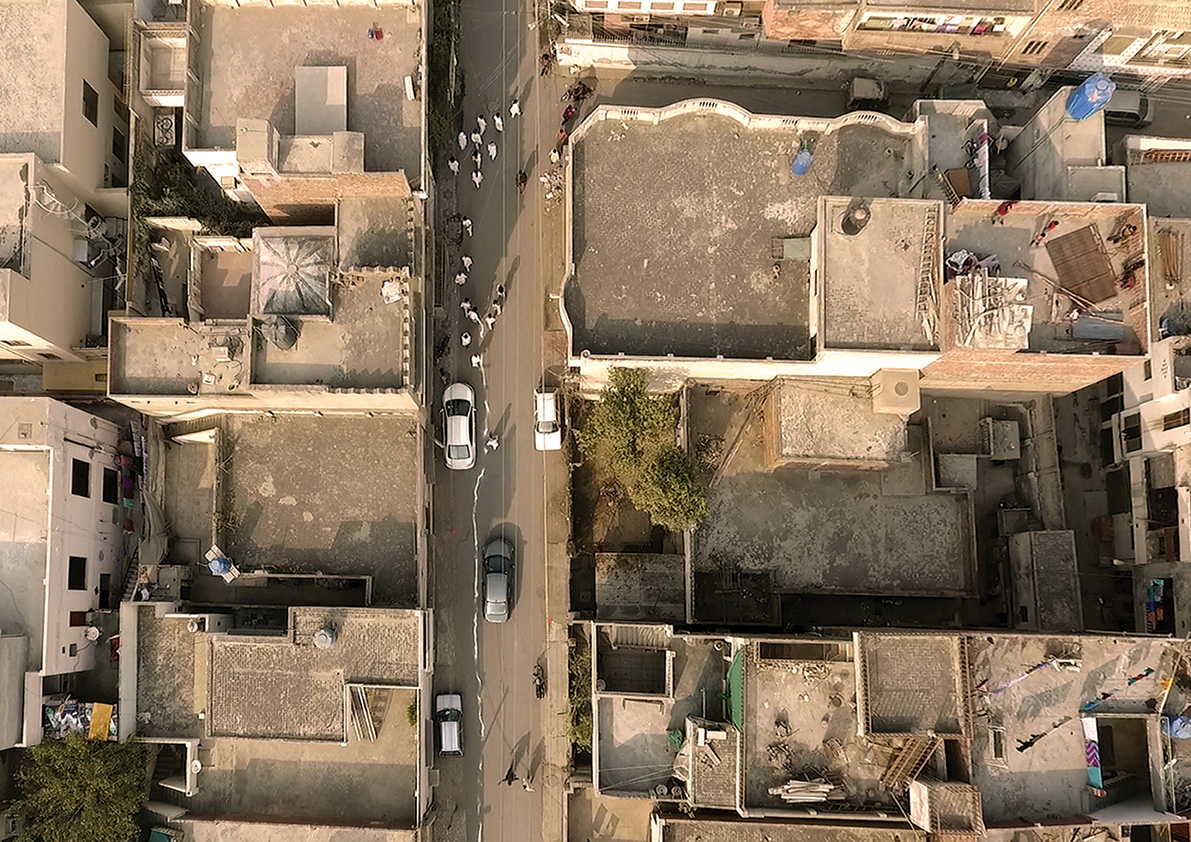
Honi Ryan. Walking Presence 5. Photo by Kashif Saleem
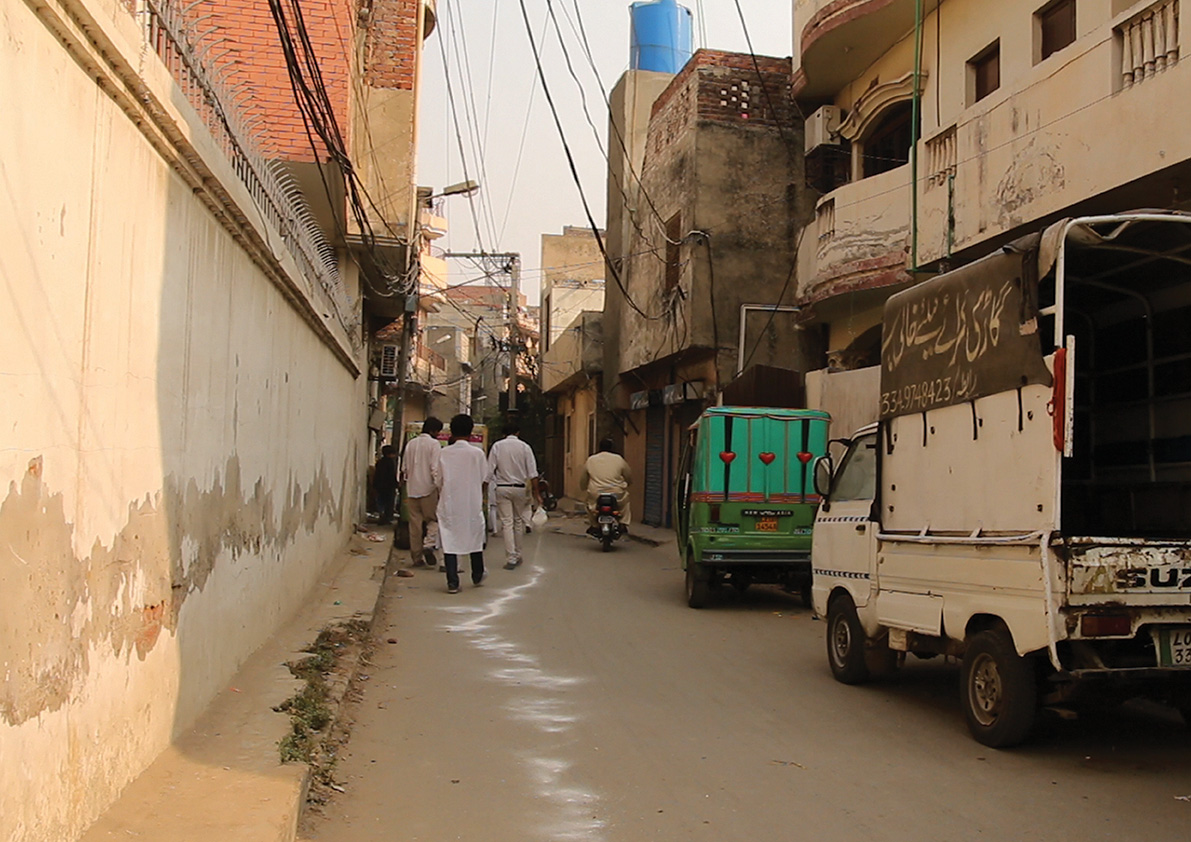
Honi Ryan. Walking Presence 6. Photo by Kashif Saleem
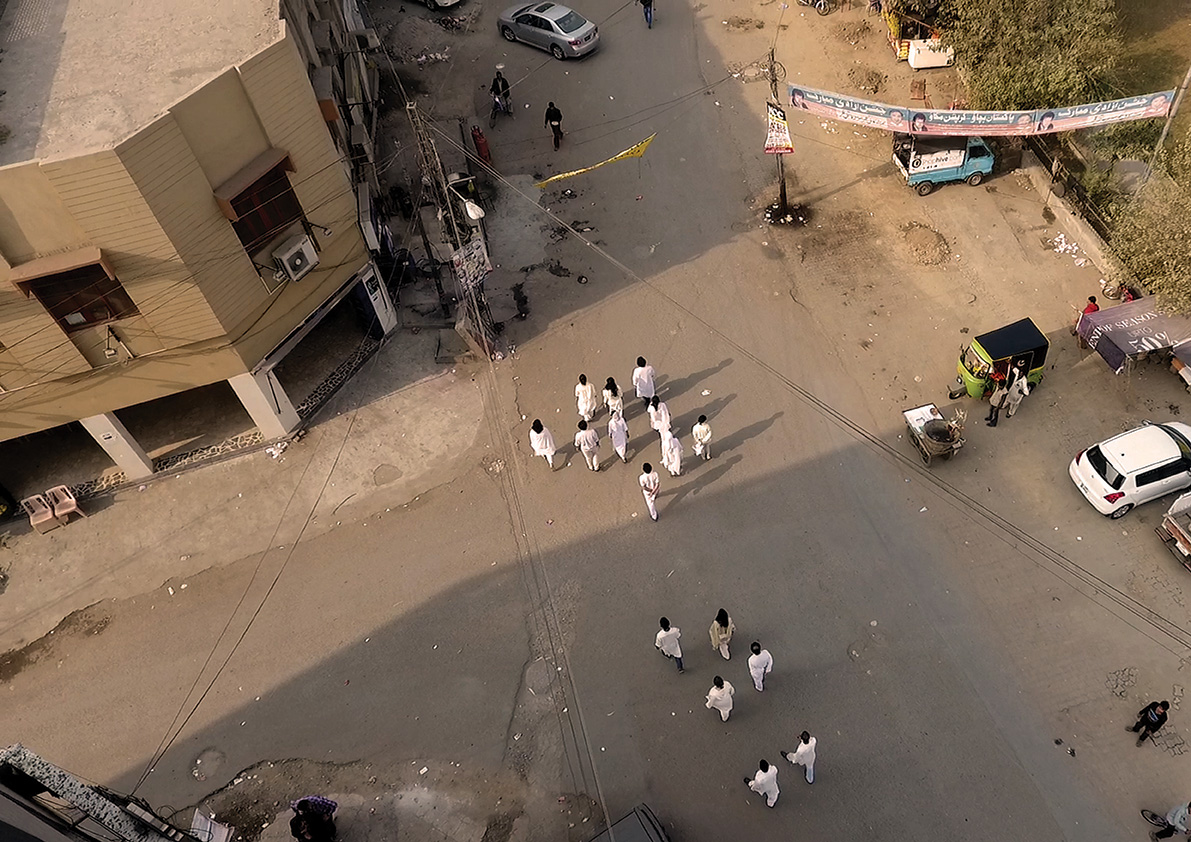
Honi Ryan. Walking Presence 7. Photo by Kashif Saleem
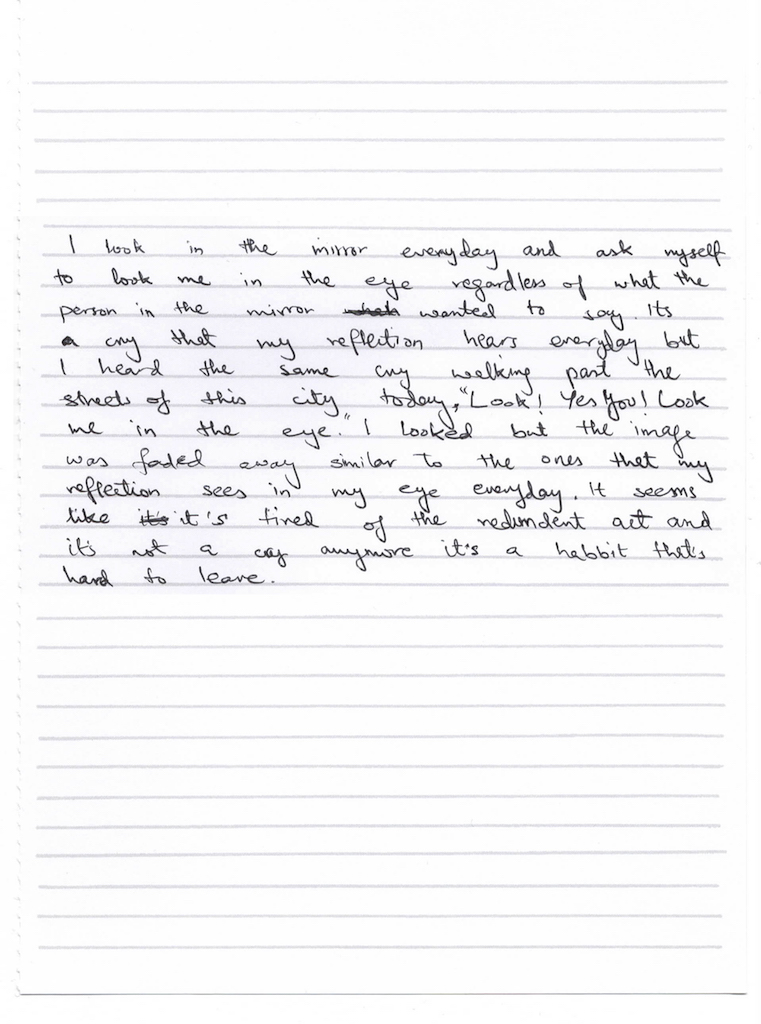
Walking Presence. Social performance, participant response by Eemaan Raja
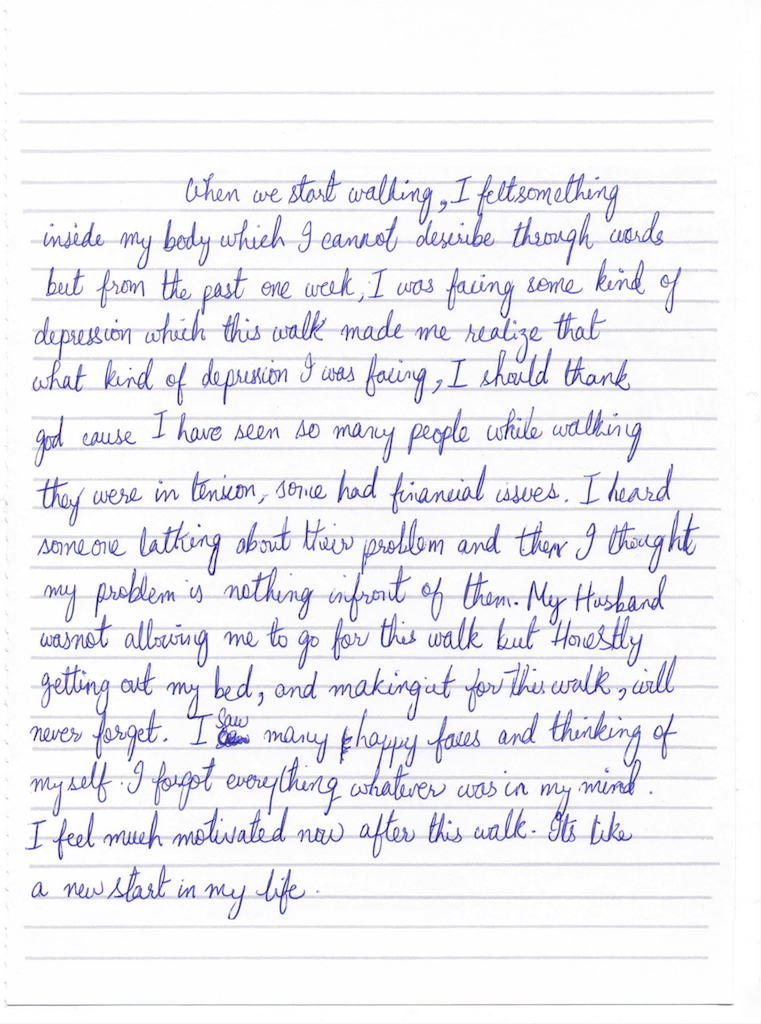
Walking Presence. Social performance, participant response by Anonymous
This project is a part of the project URBANITIES: Art and pubic Space in Pakistan, an initiative by the Goethe-Institut Pakistan, with its partner organisations the Lahore Biennale Foundation and VASL Artists Collective, and is published in a 4 part publication. For further information or for a copy of the publication in its entirety please email the author at honiryan@gmail.com.
Honi Ryan is an artist with a nomadic social practice. Her work has intercultural concerns and deals with the present body in relationship to others and their environment. Born in Melbourne, and based between Australia and Germany, Ryan has exhibited and performed in more than 10 countries over the past decade.

